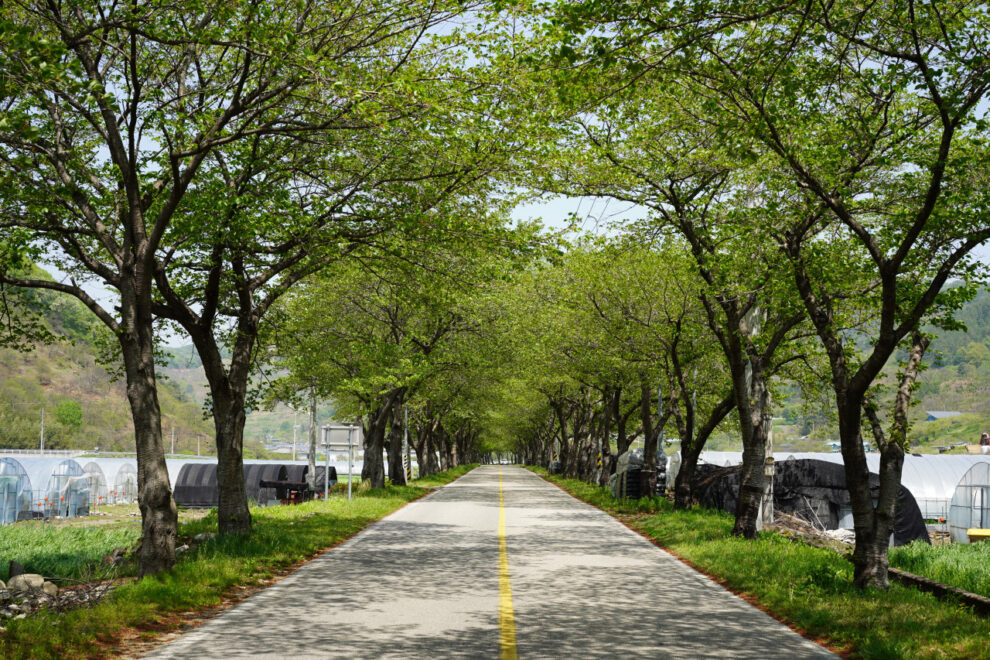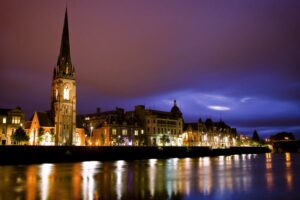HADONG, South Gyeongsang Province — Hadong, a small county some 350 kilometers south of Seoul, may not be the first destination that comes to mind for travel lovers.
None of its beautiful sites made it to the Korea Tourism Organization’s list of the 100 must-visit tourist spots in Korea this year.
But Hadong certainly has what it takes to become a mesmerizing destination where visitors can feast their eyes on splendid views and learn about fascinating historical sites.
Samseong-gung
Samseong-gung, a restored “sodo” — or sacred place where memorial services and rituals were held for the heavens or the god presiding over the heavens in ancient Korea — has become an attraction for many, not for religious reasons but as a unique historical site.
Visitors can enjoy the seemingly endless tunnels of trees lining curving roads leading to the sacred site hidden amid the lush forests of Jirisan, South Korea’s highest mainland mountain.
The small villages nearby, which visitors pass through on their way to Samseong-gung, offer pastoral scenes — such as that of a farmer riding a cultivator or farm workers enjoying lunch outside of a greenhouse.
After a 30- to 40-minute ride from downtown Hadong-gun, you can easily spot the hanok-themed entrance of Samseong-gung.
Make sure to wear a hat and sunglasses as well as bring a bottle of water, because the walking trail is mostly exposed to strong sunlight and takes about 1 1/2 hours to complete.
Covered with stone steps and dirt paths, the slightly sloping trail makes visitors feel secluded from the rest of the world.
While the squirrels scurrying about and birds chirping can be exciting for children, adults will look with awe at the sturdy stone walls that are taller than they are.
The small stone caves provide shade for tired explorers, while each stone is carved with a different shape, texture and surface, bringing a mythical aura to the site.
Visitors can enjoy a scenic view of the lake after walking 10 to 15 minutes from the entrance.
A popular photo spot, the crystal-clear, blue pond has everyone taking out their smartphones to capture selfies with their loved ones.
For a panoramic view of the area, walk farther along the rough stone walls.
With the stunning pond under the blue sky, the picturesque mountain ridge is another attraction that visitors do not easily forget.
Here, you will find an altar where an annual ritual takes place in October.
Though many people will think of the iconic symbols of “Squid Game” when they pass the altar, the triangle, circle and rectangle actually represent humans, the sky and Earth, respectively, in Korean Seon (Zen) Buddhism.
Sculptures of the twelve zodiac animals are also found at this point where visitors must decide weather to stay and look around the shrine — dedicated to the three heavenly gods — before continuing on the trail or just press on, skipping the shrine.
A short trail around the shrine allows visitors to view from the outside the portraits of Hwanin, Hwanung and Dangun – the legendary founder of Gojoseon, or old Joseon, the first recorded state in Korean history.
According to Korea’s founding myth, a tiger and a bear living in what is now the Korean Peninsula asked the heavenly god, Hwanung — the son of the lord of heaven, Hwanin — to turn them into humans.
Hwanung said their wish would be granted after eating only garlic and mugwort for 100 days while staying inside a cave.
Though the tiger gave up after 20 days, the bear endured and became a woman.
Hwanung married the bear-turned-woman, who had no one to marry, and gave birth to a baby boy, Dangun, who later became the founder of Korea’s first nation, Gojoseon.
Ranging from walls covered with “giwa” — traditional roof tiles — to millstone towers, Samseong-gung entertains visitors with unique, stone-themed artworks as well.
On your way home, stop by at an old-fashioned restaurant near the trail entrance for “pajeon,” or green onion pancakes, with janchi guksu noodles — a favorite meal for Koreans after hiking.
Home of Choi Champan
If Samseong-gung offers the experience of an ancient religious site, the Home of Choi Champan is a village of hanok covered with both thatch and giwa roofs at the foot of Jirisan.
After novelist Pak Kyong-ni’s 20-volume novel, “Land” — or “Toji” in Korean – became one of Korea’s most famous epic sagas and was adapted into a KBS drama series in 1987, the small village of Pyeongsa-ri gained immense popularity among book and drama lovers who wished to go see the places that became the settings for the master work.
In the saga, Choi Champan was a fictional high-level government official of the Joseon Kingdom (1392-1897) who lived in the village.
Looking to satisfy “Land” fans’ expectations of finding traces of the novel in the village, the county government decided to make character Choi’s home a reality in 1998.
In addition to the 14 hanok buildings constituting Choi’s re-created home, there are more than 50 thatched roof houses that bring the setting of the literary work to life. The Home of Choi Champan gets more than a million visitors each year.
The home is divided into 10 main buildings, including a shrine, the main building, servants’ quarters, men’s quarters and more.
Visitors can hear the ringing of a small bell and the chirping of birds while walking around the site.
Most of the buildings are open to the public and visitors are asked to take off their shoes when entering them.
Master calligrapher Jung Chun-hwa is on hand to write sayings using four-character idioms or family mottos.
While wandering around the houses, people can enjoy the picturesque view of a village in Pyeongsa-ri blending in with the vast rice fields and lush forests and imagine what life might have been like for those living in the late Joseon era.
A small pond, a bamboo forest and a veranda are some of the spots where the visitors can take some time to meditate and reflect while appreciating the beautiful surroundings.A 10-minute walk will take you to Dongjeongho, a lake where the pine trees make amazing scenes reflected on the water. Take some time to rest, feeling the gentle spring breeze in the quiet atmosphere.
Source: koreaherald









